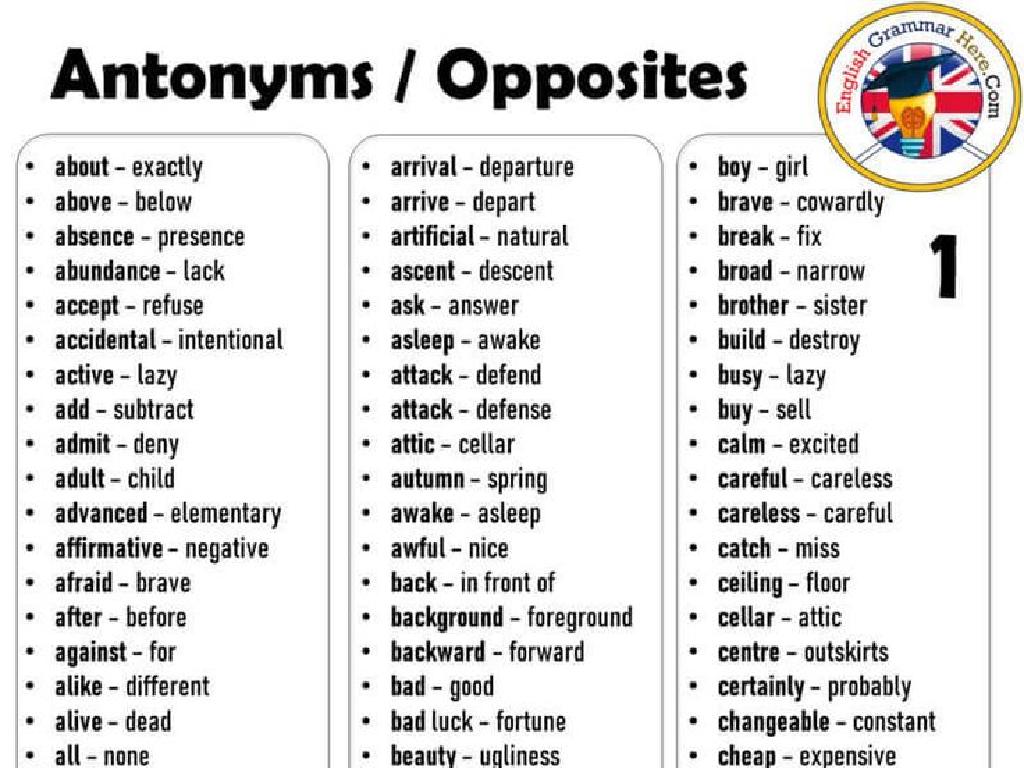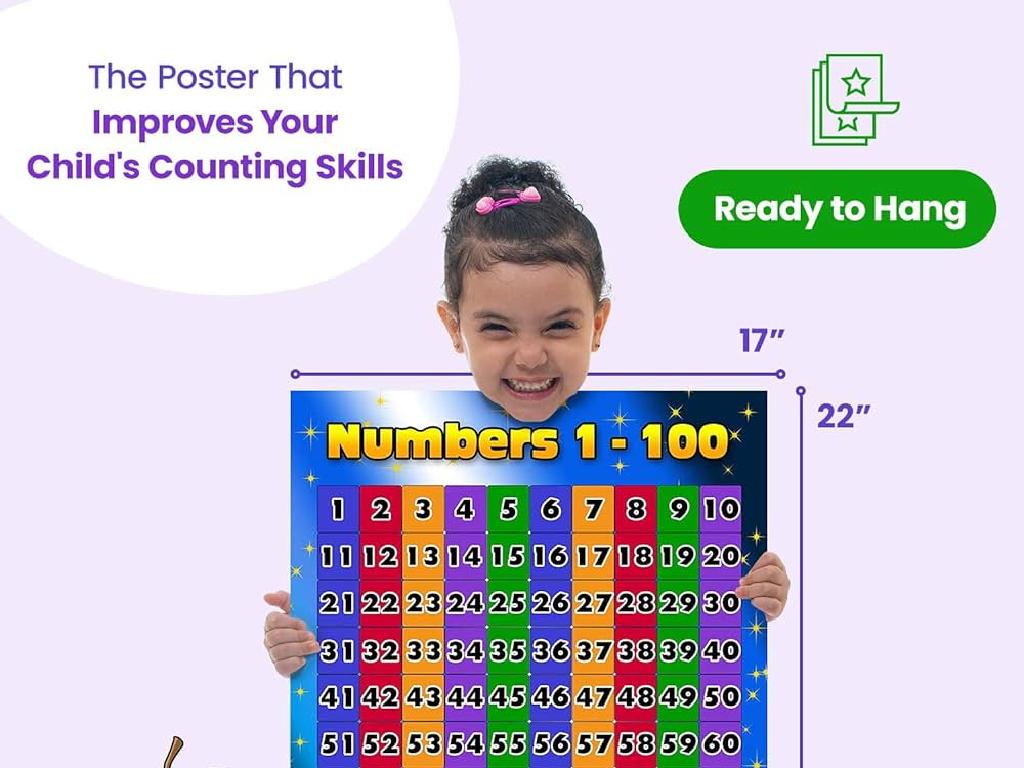Put Decimal Numbers In Order Ii
Subject: Math
Grade: Fourth grade
Topic: Decimals
Please LOG IN to download the presentation. Access is available to registered users only.
View More Content
Today’s Adventure: Putting Decimal Numbers in Order!
– What is a decimal point?
– It’s a dot that separates the whole number from the fractional part.
– Comparing decimals
– Just like whole numbers, but check right of the point!
– Decimals in daily life
– Used in money, measurements, and more.
– Practice ordering decimals
|
This slide introduces the concept of decimals and their place in the number system. Begin by explaining the decimal point and its role in separating the whole number part from the fractional part. Emphasize that decimals are just like whole numbers but with an extra part that comes after the point. Illustrate how to compare decimals by looking at the digits to the right of the decimal point. Highlight the importance of decimals in everyday life, such as in currency, measurements, and time. Conclude with an interactive activity where students practice putting decimal numbers in order, reinforcing their understanding of the concept.
Understanding Decimals
– What is a decimal?
– A decimal separates whole numbers from parts.
– Decimals vs. fractions
– Decimals are another way to write fractions, lined up neatly!
– Decimal places and values
– Each place after the decimal has a unique value, like tenths, hundredths.
– Practice ordering decimals
|
This slide introduces the concept of decimals to fourth-grade students. Begin by explaining that a decimal is a point used in a number to separate the whole part from the fractional part. Compare decimals to fractions to show how they represent parts of a whole, emphasizing that decimals are often easier to work with because they line up in a row. Discuss the place value of each digit after the decimal point, such as the tenths, hundredths, and thousandths places. To reinforce learning, engage students in an activity where they practice ordering decimal numbers, starting with simple examples and gradually increasing complexity. This will help them understand the value of each decimal place and how it determines the order of numbers.
Understanding Decimal Places
– Tenths place: First after decimal
– It’s like 1 dime in $1.0
– Hundredths place: Second position
– Like 1 penny in $0.10
– Thousandths place: Third spot
– Like 1/10 of a penny in $0.100
– Each place has a value ten times smaller
|
This slide is aimed at helping fourth-grade students understand the concept of decimal places. Start by explaining that decimals are a way of writing fractions and parts of numbers. The first place after the decimal point is the tenths place, which is like having one dime in a dollar. The second place is the hundredths place, similar to one penny in a dime. The third place is the thousandths place, which is even smaller, like one-tenth of a penny in a penny. Emphasize that as we move further from the decimal point, each place value is ten times smaller than the previous one. Use visual aids or physical coins to help students grasp the concept of place value in decimals.
Comparing Decimals
– Align decimal points to compare
– Compare digits from left to right
– First differing digit is key
– If 0.65 and 0.625, the first different digit is 5 in 0.65, so it’s larger.
– Practice with examples
– Example: Which is greater, 0.7 or 0.67?
|
When teaching students to compare decimal numbers, it’s crucial to start with the alignment of decimal points. This ensures that the digits of the same place value are compared against each other. Begin comparing from the leftmost digit, moving to the right until a difference is found. The first digit that is different will determine which number is larger or smaller. Provide several examples and practice problems for the students to work through, such as comparing 0.7 and 0.67, to reinforce the concept. Encourage students to explain their reasoning for each comparison to solidify their understanding.
Let’s Practice Comparing Decimals!
– Comparing two decimal numbers
– Example: 0.65 vs. 0.6
– Which number is larger? Let’s find out!
– Check the tenths place first
– The tenths place is the first number after the decimal
– Then, look at the hundredths
– If tenths are equal, the hundredths decide which is bigger
|
This slide is designed to help students practice comparing decimal numbers. Start with an example, such as 0.65 versus 0.6, and guide the students to understand that when comparing decimals, we start by looking at the highest place value, which is the tenths place in this case. If the tenths place is the same, then we move to the hundredths place. Encourage students to think of the decimal places as ‘points’ in a game where the highest ‘points’ win. This will help them remember that the number with the higher place value is greater. Provide several examples and have students come up to the board to solve them, ensuring they understand the concept of comparing decimals.
Ordering Decimal Numbers
– Line up decimal points
– Place decimals in a vertical list to compare
– Determine order direction
– Decide: smallest to largest or largest to smallest?
– Apply comparison rules
– Use place value to compare digits in the same position
– Practice ordering decimals
|
This slide is aimed at teaching fourth graders how to order decimal numbers. Start by explaining the importance of aligning decimal points, which makes it easier to compare the numbers. Clarify whether the task is to arrange the numbers from the smallest to the largest or the other way around. Emphasize that the same rules they’ve learned for comparing whole numbers apply to decimals as well. Encourage students to look at the digits from left to right and compare place values. As an activity, provide a set of decimal numbers and ask students to order them both ways. This will help reinforce their understanding of place value and the concept of ordering decimals.
Practice Ordering Decimals
– Ordering decimals example
– Let’s arrange: 0.25, 0.3, 0.305, 0.35
– Compare digits step by step
– Start comparing after the decimal point
– Write decimals in ascending order
– Smallest to largest: 0.25, 0.3, 0.305, 0.35
– Practice with given numbers
|
This slide is aimed at helping students practice the skill of ordering decimal numbers. Start by comparing the tenths place, then move to the hundredths, and so on, until you can determine the order. It’s important to line up the decimals vertically and compare each place value. The example given should be worked through as a class, with students encouraged to participate in finding the correct order. Afterward, provide additional sets of numbers for the students to practice independently or in groups, reinforcing the concept through repetition and variation.
Class Activity: Decimal Detective!
– Find objects with decimal numbers
– Pair up and order the numbers
– Discuss: Which is larger or smaller?
– Is 0.5 larger than 0.05? How can you tell?
– Share findings with the class
|
In this engaging activity, students will search the classroom for items that have decimal numbers on them, such as rulers or weight measurements on packages. They will then work with a partner to arrange these numbers from smallest to largest, fostering collaboration and critical thinking. Encourage them to discuss their reasoning for the order, focusing on the concept of place value and how it determines the size of the number. After ordering, each pair will present their findings to the class, allowing for a discussion on common misconceptions and reinforcing the correct understanding of decimal numbers. Possible variations of the activity could include ordering numbers from largest to smallest, or finding the sum or difference of decimal numbers found in the classroom.
Conclusion: Mastering Decimals
– Celebrate becoming Decimal Detectives
– Decimals show numbers uniquely
– Think of decimals like another version of fractions
– Practice ordering decimals regularly
– Try arranging decimals from smallest to largest
– Keep up the great work!
|
Congratulations to the class for their hard work in understanding how to order decimal numbers. Emphasize that decimals are simply another method for representing numbers, particularly parts of a whole, similar to fractions. Encourage continuous practice at home with different sets of decimal numbers to become more confident. Reinforce the concept by reminding them that consistent practice will help solidify their skills. Celebrate their progress and motivate them to keep practicing and improving.






